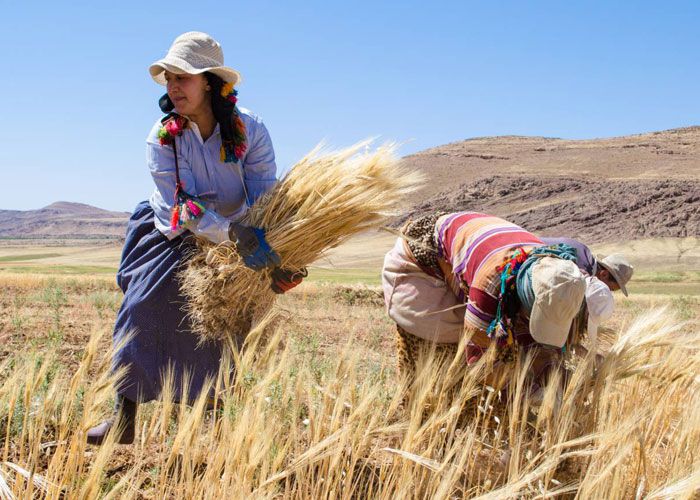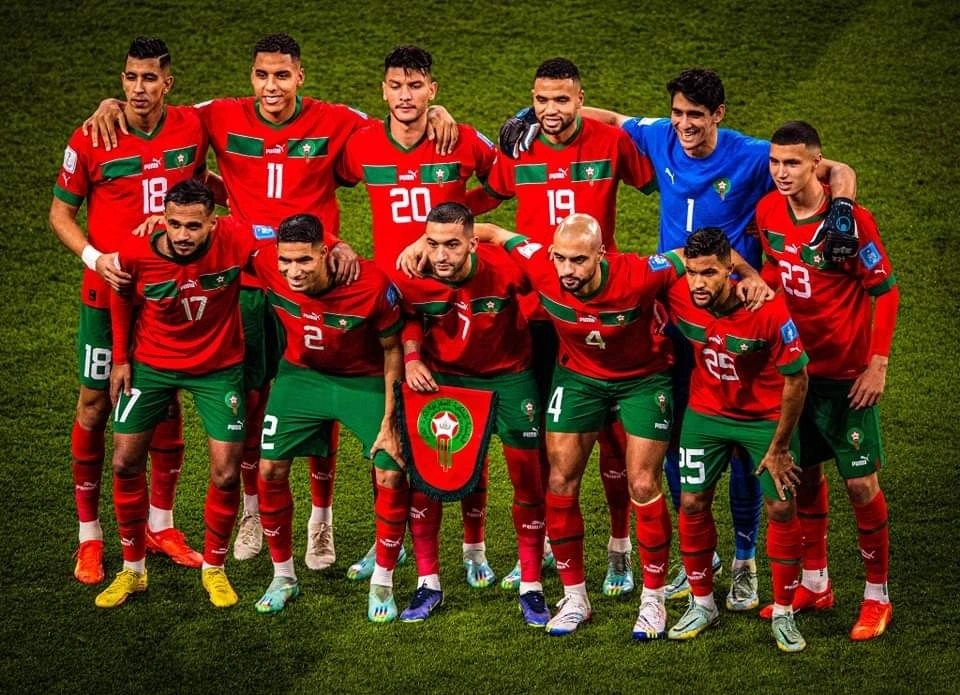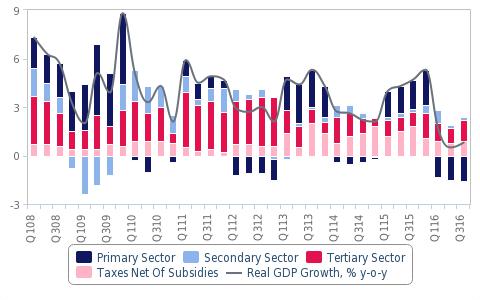
According to Fitch Group’s BMI research, GDP growth in Morocco will significantly accelerate to 4.3% in 2017, after severe drought conditions resulted in a poor harvest in 2016, dragging on the primary sector. As the 2017 yields greater output and as government efforts to attract foreign direct investment in industry and services continue to pay off, Morocco will outperform most states in the MENA region, says BMI research.
Fitch Group’s BMI research’s said that Morocco’s Q3 GDP data continue to show the effects of a decline in agricultural production on the economy, but stresses that it does not affect the positive outlook for 2017.
“Real GDP growth came in at a weak 0.8% y-o-y in Q316, a minor uptick compared with 0.5% y-o-y in Q216 but well below average growth of 4.5% throughout 2015. The slowdown is primarily attributed to a contraction in agricultural output, which has accounted for an average 13% of GDP and 40% of employment over the past decade, while industry and services have remained relatively resilient. With the 2017 harvest set to yield significantly greater output, we forecast real GDP growth to accelerate to 4.3%, up from an estimated 0.9% in 2016,” the recently published report reads.
A severe drought in the country resulted in cereal production falling by 65% in 2016, after a record harvest of 11mn tonnes in 2015. As such, the primary sector contracted by 10.6% in the first nine months of 2016, accounting for a 1.5 percentage point drag on headline growth over the period. Barring a sudden worsening of climatic conditions, our Agribusiness team forecasts wheat production to grow by 90% in 2017. This will in turn support economic activity, directly through higher output but also indirectly by boosting households’ purchasing power.
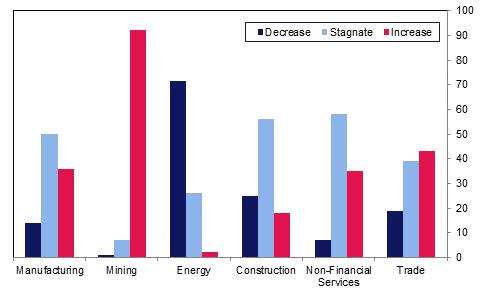
Fitch’s group BMI research maintains a positive outlook for economic activity outside the agricultural sector, underpinning its view for Morocco to be an economic outperformer in the Middle East and North Africa (MENA) region over the coming years (see ‘One Of MENA’s Outperformers In 2017’, December 2 2016). The institute said that the Moroccan government will maintain its efforts to transform the country into a manufacturing and exporting hub between Europe and Africa, and has successfully attracted large inflows of foreign direct investment.
The aforementioned institute stresses that a new investment charter was adopted in August 2016 (the old one had been left untouched since 1995), creating at least one free zone in each Moroccan region over the coming years . Reflecting this positive investment drive, foreign direct investment is experiencing strong growth, especially in higher value-added industries such as the autos sector (see ‘Renault’s Ecosystem To Further Cement Morocco’s Autos Strategy’, 13 April 2016).
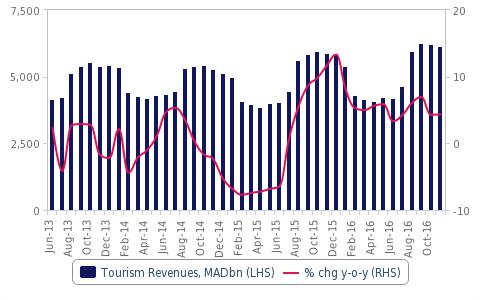
Fitche’s group BMI research closes saying that the tourism will experience modest but positive growth in 2017, reflecting Morocco’s outperformance in the MENA region given relative political stability. Tourist arrivals increased by 0.3% in the first nine months of 2016, while tourism receipts expanded by 6.9%. European tourists will continue to be deterred by the heightened terrorist threat and political instability across the MENA region. Nonetheless, Morocco’s relative stability compared to its neighbours and fast-growing arrivals from Chinese and Russian tourists will ensure modest growth in the industry.




